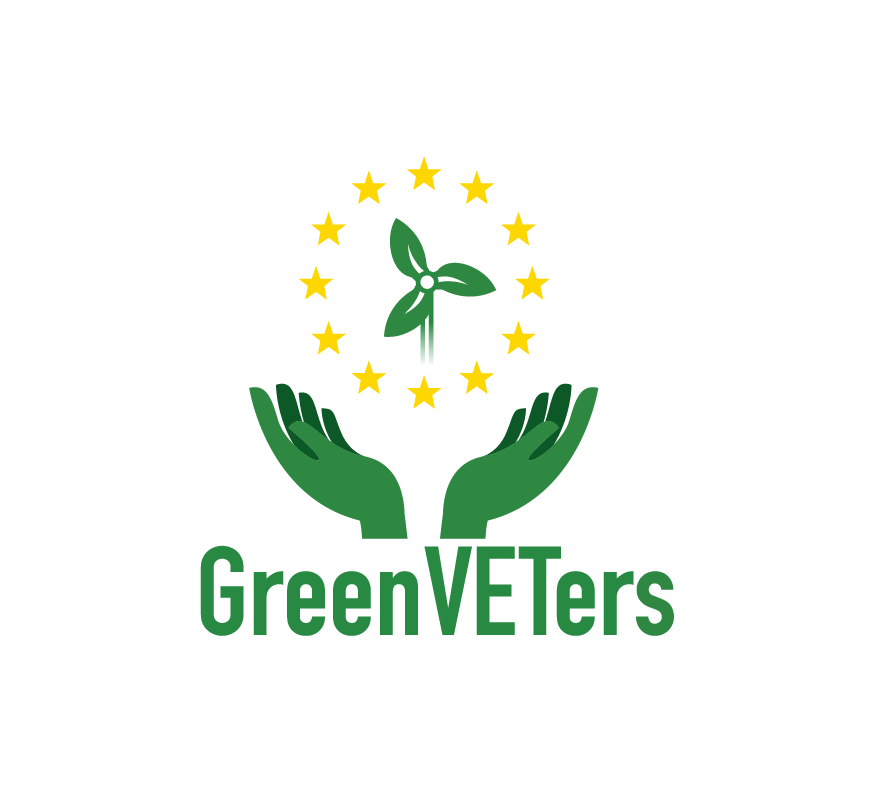Worksheet for Lesson 12:
The Implementation of the Green Deal via Citizen Deliberation for the Engineering Sector
Learning Objectives:
1. Students learn examples of deliberation topics in the EU regarding the Agriculture sector
Deliberation Topic: The use of agrovoltaics for food and land use in Europe
Discussion prompts:
Land use has two main parameters in agriculture to produce energy and crop yields. Agrovoltaics offer a dual solution by placing photovoltaic (PV) panels over agricultural land. More advanced options also adjust shading positions according to sun exposure to maximize yield production. Research is still in its initial stages in Europe. You may use the references listed below to create a more educated discussion.
Issue Stances:
• Widen implementation across Europe by providing funding options to farmers.
• Maximize the storage capacity and flow before mass implementation.
• Continue the testing period for over a 3-4 year period.
• Find alternative sources of energy.
• Maximize the storage capacity and flow before mass implementation.
• Continue the testing period for over a 3-4 year period.
• Find alternative sources of energy.
References:
• Chalgynbayeva, A., Gabnai, Z., Lengyel, P., Pestisha, A., & Bai, A. (2023). Worldwide Research Trends in Agrivoltaic Systems—A Bibliometric Review. Energies, 16(2), 611.
• Klenske, N. (2022). To feed a growing population, farmers look to the Sun. https://ec.europa.eu/research-and-innovation/en/horizon-magazine/feed-growing- population-farmers-look-sun
• Vanino, S., Pirelli, T., Di Bene, C., Bøe, F., Castanheira, N., Chenu, C., … & Farina, R. (2023). Barriers and opportunities of soil knowledge to address soil challenges: Stakeholders’ perspectives across Europe. Journal of Environmental Management, 325, 116581.
• Klenske, N. (2022). To feed a growing population, farmers look to the Sun. https://ec.europa.eu/research-and-innovation/en/horizon-magazine/feed-growing- population-farmers-look-sun
• Vanino, S., Pirelli, T., Di Bene, C., Bøe, F., Castanheira, N., Chenu, C., … & Farina, R. (2023). Barriers and opportunities of soil knowledge to address soil challenges: Stakeholders’ perspectives across Europe. Journal of Environmental Management, 325, 116581.
Deliberation topic: Regulating new plant breeding techniques (NPBTs) in Europe
Discussion prompts:
Developing new plant breeding techniques due to climate change threats to crops has been an increasingly debatable issue across the EU. The plant breeding techniques create new crop varieties by increasing crop yield and resilience to extreme climate changes and pests. However, since 2018, considerable debate has been on how these techniques should be regulated and whether they should fall under the EU legislation on genetically modified organisms (GMOs). You may use the references listed below to create a more educated discussion.
Issue Stances:
• Exempting the new techniques from GMO legislation
• Classifying the new techniques under GMO legislation
• Classifying the new techniques under GMO legislation
Sources that can be used:
• Jorasch, P. (2020). Potential, challenges, and threats for the application of new breeding techniques by the private plant breeding sector in the EU. Frontiers in Plant Science, 11, 582011.
• Madre, Y. and Agostino, V. D. (2017). NEW PLANT-BREEDING TECHNIQUES: WHAT ARE WE TALKING ABOUT?. https://www.farm-europe.eu/travaux/new-plant- breeding-techniques-what-are-we-talking-about/
• Myskja B, Schouten H & Gjerris M (2015): Ethical distinctions between different kinds of plant breeding. In: Dumitras DE, Mugurel JI & Aerts S (eds.): Know your food: food ethics and innovation. Wageningen: Wageningen Academic Publishers, pp. 95-100. https://nationaltcenterforetik.dk/Media/637838140852364542/Ethical%20distinction s%20between%20different%20kinds%20of%20plant%20breeding.pdf
• Laaninen, T. (2019). New plant-breeding techniques: Applicability of EU GMO rules. https://www.europarl.europa.eu/RegData/etudes/BRIE/2020/659343/EPRS_BRI(202 0)659343_EN.pdf
• Zaidi, S. S. E. A., Mahas, A., Vanderschuren, H., & Mahfouz, M. M. (2020). Engineering crops of the future: CRISPR approaches to develop climate-resilient and disease- resistant plants. Genome biology, 21(1), 1-19.
• Madre, Y. and Agostino, V. D. (2017). NEW PLANT-BREEDING TECHNIQUES: WHAT ARE WE TALKING ABOUT?. https://www.farm-europe.eu/travaux/new-plant- breeding-techniques-what-are-we-talking-about/
• Myskja B, Schouten H & Gjerris M (2015): Ethical distinctions between different kinds of plant breeding. In: Dumitras DE, Mugurel JI & Aerts S (eds.): Know your food: food ethics and innovation. Wageningen: Wageningen Academic Publishers, pp. 95-100. https://nationaltcenterforetik.dk/Media/637838140852364542/Ethical%20distinction s%20between%20different%20kinds%20of%20plant%20breeding.pdf
• Laaninen, T. (2019). New plant-breeding techniques: Applicability of EU GMO rules. https://www.europarl.europa.eu/RegData/etudes/BRIE/2020/659343/EPRS_BRI(202 0)659343_EN.pdf
• Zaidi, S. S. E. A., Mahas, A., Vanderschuren, H., & Mahfouz, M. M. (2020). Engineering crops of the future: CRISPR approaches to develop climate-resilient and disease- resistant plants. Genome biology, 21(1), 1-19.
Deliberation Topic: Use of sensors for precision agriculture
Discussion prompts:
Precision Agriculture (PA) uses different types of sensors to retrieve data about soil, crops and weather conditions in order to optimise productivity and sustainability by reducing costs, creating a positive environmental impact and producing high-quality goods. However, the long-term sustainability of sensors is an issue that still needs to be researched since environmental conditions and exposure to chemicals might reduce their functionality. You may use the references listed below to create a more educated discussion.
Issue Stances:
• Frequent troubleshooting of sensors
• Combination of satellite imaging for data comparison
• Other
• Combination of satellite imaging for data comparison
• Other
Sources that can be used:
• European Parliament (2017). Precision agriculture in Europe: Legal and ethical reflections for law-makers. https://www.europarl.europa.eu/RegData/etudes/STUD/2017/603207/EPRS_STU(201 7)603207_EN.pdf
• Kim, M. Y., & Lee, K. H. (2022). Electrochemical Sensors for Sustainable Precision Agriculture—A Review. Frontiers in Chemistry, 10.
• Mukhamediev, R. I., Yakunin, K., Aubakirov, M., Assanov, I., Kuchin, Y., Symagulov, A., … & Amirgaliyev, Y. (2023). Coverage path planning optimization of heterogeneous UAVs group for precision agriculture. IEEE Access.
• Kim, M. Y., & Lee, K. H. (2022). Electrochemical Sensors for Sustainable Precision Agriculture—A Review. Frontiers in Chemistry, 10.
• Mukhamediev, R. I., Yakunin, K., Aubakirov, M., Assanov, I., Kuchin, Y., Symagulov, A., … & Amirgaliyev, Y. (2023). Coverage path planning optimization of heterogeneous UAVs group for precision agriculture. IEEE Access.





